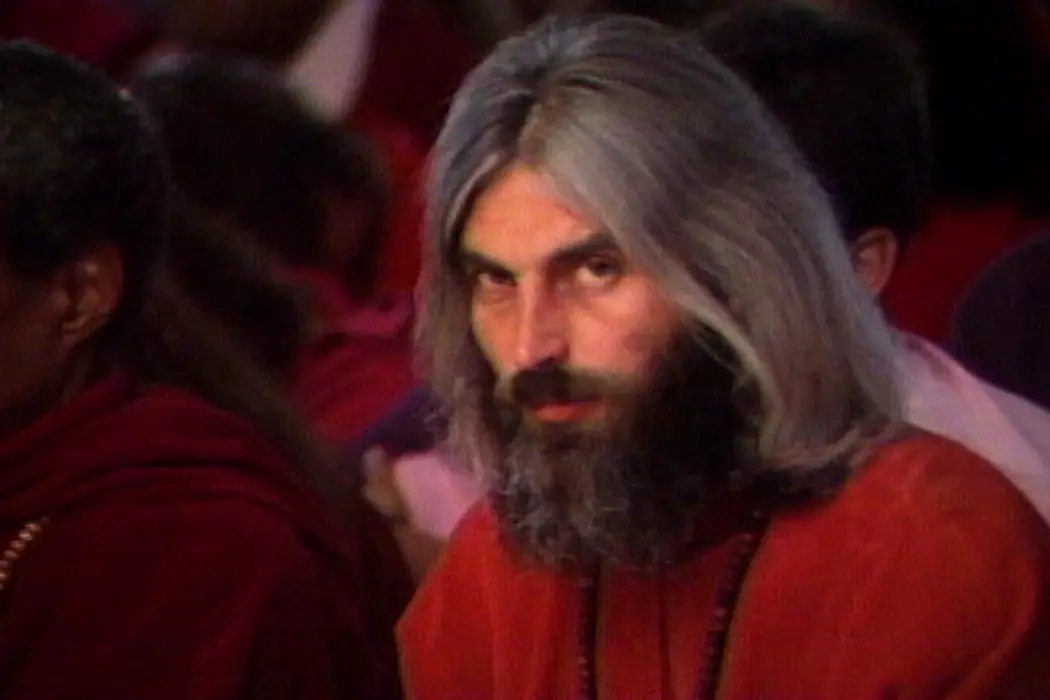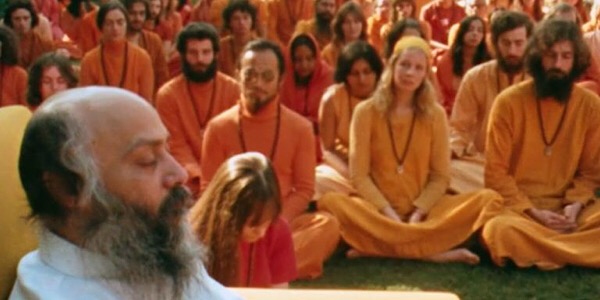WILD WILD COUNTRY: A True Story That Seems Stranger Than Fiction

Kristy Strouse is the Owner/Editor in Chief of Film Inquiry,…
A self-proclaimed and controversial guru in the 1980’s heads to Oregon to expand into a large commune, and the events that unfold, over thirty years ago, are still highly unknown and remarkably unbelievable. Netflix’s newest documentary Wild Wild Country from directors Chapman and Maclain Way, captures the story from all perspectives, resulting in a six-hour experience that is sure to snare you. Set aside the window of time, it’ll be well worth it.
With attempted murder, bio-terrorism, illegal wire-tapping and immigration, an enormous collection of Rolls Royces, and not to mention warring towns, Wild Wild Country is wild indeed.
Rajneeshpuram: Peace intended, Conflict Ensues
This was a subject that was unknown to me, and as I continued to devour this documentary I couldn’t help repeatedly thinking, “How have I never heard about this?”. I would recommend going into it as blind as you can, specifically for the shock and awe factor that this will inevitability create.
Guru Bhagwan Rajneesh (Also known as Osho), had an ashram in India, where he implemented the goals of love and peace, as well as exercising emotions through chants and meditation. He was nicknamed the “sex guru”, because of his teachings of free sexuality. In 1981, he had his private secretary Ma Anand Sheela acquire land in the countryside of Wasco Country, Oregon. The purpose was to erect a city for his disciples to live in and practice their beliefs. The Rajneeshees, or Sannyasins as they were called, decked in red and orange attire, amazingly created a stunning city, molding everything by hand.

This documentary, while providing lots of insight into Bhagwan, is more about the storm that begins upon his arrival in the US, and the descent into criminal territory. Wild Wild Country does a terrific job of weeding through and carefully choosing the 300-hours of footage that the directors had been given, in a way that transports the viewer. Things do eventually get murky for the Rajneeshees, but what they first created was incredible.
In Wasco Country, Oregon, was the nearby conservative ranching town of Antelope. With only about 40 residents, it was a small and quiet place. As the Rajneeshees settle in, their exuberant ways threaten the paranoid people of Antelope, as they have no qualms about flaunting their lifestyle. This eventually leads to a tumultuous relationship, igniting a war between the two.
It seems that the Sannyasins were recording almost everything, so there is a lot to visually stimulate. These glimpses into this incredulous slice of history offer an absorbing context that successfully transports you. Throughout the documentary the directors splice together clips of interviews, news reports, and archived footage. All of it is edited seamlessly, providing a completely engrossing narrative. Every selected interview is equally important, giving us direct insight from those personally involved.
Faith And Freedom
Sheela, Bhagwan’s lieutenant, and right-hand woman, might just be the most compelling part of the series. She’s very outspoken, as shown in archived interviews as well as new ones, and she seems to hold nothing back. Her bluntness, confidence and unwavering descriptions make it hard not to hang onto her every word. Sheela is cutthroat, and her commitment to her master, as well as her inflated sense of power, leads her down a very dangerous path.

Those who live in Antelope feel the Sannyasins are taking over their town, while on the other side, the Sannyasins are threatened. The lack of effective communication, and a general stubbornness from both parties, leads to further trouble. The level of unbelievability only grows, as we soon learn the scope of this movement. The dispute is further perpetuated past the locals of antelope, involving the state of Oregon as a whole. As politicians, and lawman become involved, the stakes are even higher.
The Sannyasins eventually arm themselves, patrolling with automatic weapons, and creating their own police force. As things became more quarrelsome a dissension is created within the Rajneeshees own ranks, leading to attempted murder. Sheela, the inscrutable public face of the movement, is daring in how she describes the commune to the world, but eventually, her ambitions lend her to initiate a horrific act that threatens the lives of over 700 Americans.
I’m going to leave out a lot of the specifics to keep this documentary, and all of it’s delicate intricacies, as vitally fresh as it deserves. Rest assured, there are a lot of surprises to behold.
The downfall of the Sannyasins is contributed to unyielding devotion, greed and an unwillingness to compromise (from both sides). So much goes into the creation and decimation of the city of Rajneeshpuram, and this documentary provides us with an honest, nothing held-back appraisal.
This is also a story of discrimination, intolerance, and the separation of church and state. This commune began from a pure place, but things began to tread downwards. Were they pushed to it? Is it a cult? Are the Sannyasins evil (as some claim), or merely different? Are they just trying to practice their right to religion? Is it unfair persecution and bigotry? There are a lot of reasonable questions that it raises, and the directors do a terrific job of staying objective, while giving equal time for all the voices involved to be heard. They let the viewer decide. All of the members that were willing to share were engaging, and it gave this story a personal feel.

Co-director Chapman Way said, when I interviewed the two brothers recently, “We interviewed a lot of the Sannyasins, and it was pretty incredible to hear how many of these people said that this was the greatest experience of their lives. And if they could, they would do it all over again in a heartbeat.”
Conclusion: Wild, Wild, Country
Entirely binge worthy, Netflix seemed like the perfect platform for this story to be delivered to the world. Wild Wild Country is worth the over six hours needed to watch it. In the first episode the groundwork is laid to build up the remaining storylines, and to give it the time it deserves. I think the second part is where it truly finds its footing. Could things could have been trimmed? Perhaps, but at the same time – I craved more.
The story of the Sannyasins, Bhagwan, and the enveloping occurrences is highly intriguing. Wild Wild Country efficaciously captivates. This is a true story that seems too strange to be real, but with the sure hands of directors Chapman and Maclain Way, who weave this together with a keen artistic skill, it manages to feel not only tangible, but it provokes sincere emotion. Take the plunge.
What did you think? Did you know about this prior to viewing the documentary? Let us know in the comments below!
Wild Wild Country is available to stream on Netflix March 16.
Does content like this matter to you?
Become a Member and support film journalism. Unlock access to all of Film Inquiry`s great articles. Join a community of like-minded readers who are passionate about cinema - get access to our private members Network, give back to independent filmmakers, and more.
Kristy Strouse is the Owner/Editor in Chief of Film Inquiry, writer, podcaster, and all around film and TV fanatic. She's also VP of Genomic Operations at Katch Data and is a member of The Online Association of Female Film Critics and The Hollywood Creative Alliance. She also has a horror website: Wonderfully Weird & Horrifying.













